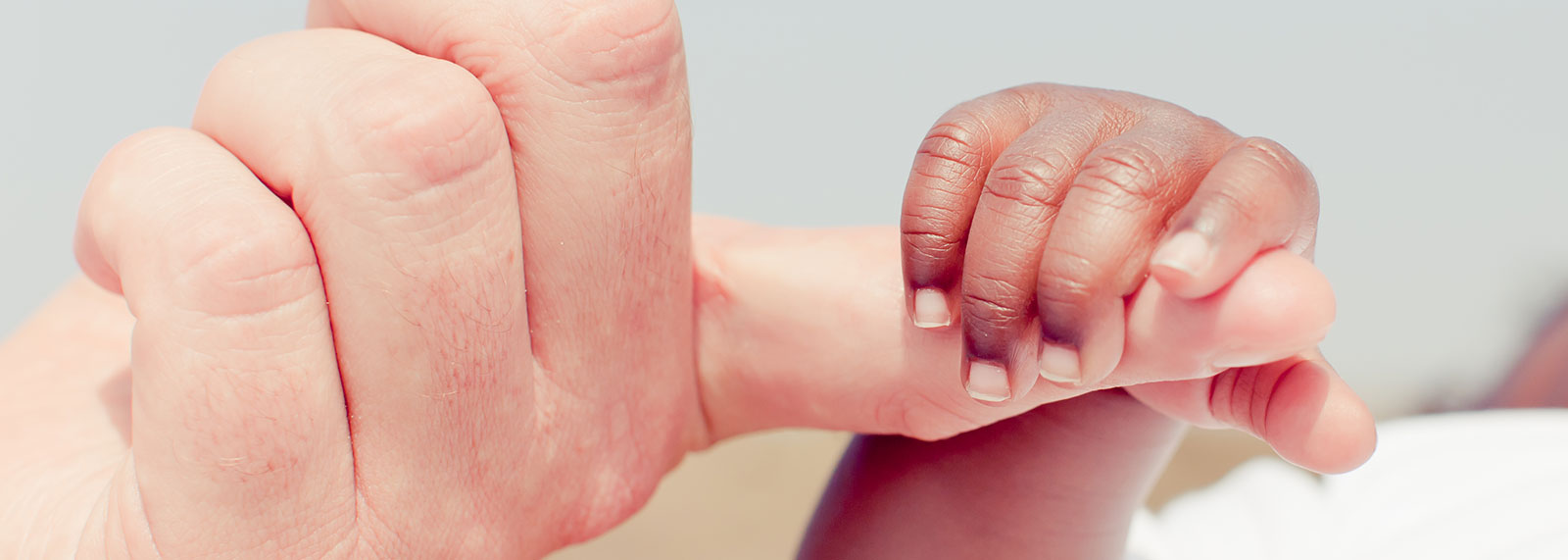Specific Character of USA adoptions
Open Adoption
In the fast majority of the cases, the American adoption procedure – just like in a Dutch adoption procedure (the adoption of a child in the Netherlands) – has an open character.
The role of the biological mother (and in some cases the father) is often large. In most cases she not only chooses where she wants her child to grow up, but also wants to stay in touch in the future. Of course, this takes place with respect for all parties involved, while putting the child’s best interests.
This means that the adoptive family is obligated to provide the biological parent(s) – through the American adoption contact – periodically with an update about the child’s overall development. In most cases, the adoption parents in the Netherlands maintain good personal contacts with their adopted child’s biological family. This varies from (yearly) trips to the USA for meetings, Skype sessions, telephone conversations, to sending an email of letter periodically.
It is important that all our PAPs understand this before they begin with a USA adoption procedure. Exiting? Yes! Important for your adopted child? Definitely! It is also important to realize that along the way your child will also have a voice in deciding how this contact shall be shaped in the future.
Backgrounds of Children
ANW and our American contacts always put the child’s best interests first. Regardless of race, heritage, or background: every child has the right to grow up in a safe and loving family with whom they share a legal bond for life.
In general, the children who are placed for adoption in the USA are medically healthy at the moment of placement; with vary degrees of undetermined risks for the future, and possibly the existence of postponed special needs, due to the birth parents’ backgrounds and everything that has happened during the pregnancy. The use of drugs and medication by the birthmother during the pregnancy also occurs frequently, and sometimes it concerns the (occasional) use of alcohol during the pregnancy. Furthermore, it frequently concerns biological parents with (in some cases hereditary) mental conditions. Premature births are also a common occurrence, often due to the use of drugs, medication and/or alcohol. Finally, it also applies to the USA that conditions might be operable/treatable. We see little to none physical or medical special needs in the USA that can be diagnosed immediately after birth.
The PAPs that have decided to be open to the placement of a child from the USA must be aware of this and must also be open to this. They must want and must be able to meet the needs of their adopted child in the present and in the future, and to get help, if needed.
Even when it concerns a pregnancy without a burdened background or a complex lifestyle, according to the provided file, the aforementioned still applies to the adopted child. In life there are no guarantees.
ANW expects from the PAPs that they research the consequences of the most common backgrounds before they begin the procedure, and that they will continue with their research during the course of the adoption procedure.
In a USA adoption procedure there is often a lot of social and medical information provided concerning the biological parents and the course of the pregnancy. It usually concerns information about the living circumstances, the lifestyle, and the social-medical backgrounds of the biological parents during the pregnancy.
Furthermore, there is often more information available about the medical history of the biological family: the siblings of the biological parents, the father and mother of the biological parents, and the siblings of the adopted child.
The biological father is regularly not in the picture, or there is hardly any or no information available about him or the biological family at the moment of placement.
Please contact us to request the information brochure concerning the backgrounds of the children. We also organize special information sessions about the backgrounds of the children from the USA with specialist attending to provide you with more information. Please go to Event Schedule for further information.
Intended Matches and Emotional and Financial uncertainties
When it concerns a USA adoption procedure, the biological parents who are unable, do not want to, oare are not allowed to take care of their child, have the right to choose if or with which family their child should be placed. To make sure that it concerns a well-thought-through decision, they receive counseling to explore their options, including alternatives for adoption, and help with creating a plan for the future of their (often unborn) child. The social workers and/or staff members of the adoption agencies provide them with guidance and counseling. In most cases, options counseling leads to birth parents making the decision to raise their child themselves, to place the child in foster care, or to let family members raise their child. However, when this is not possible, the option of placing the child for adoption is then explored.
It is in the child’s best interests that options counseling is provided and that all options are carefully explored before the child is born, because this might help the biological mother to find some peace in an often stressful and difficult situation. Exactly the same also takes place with Dutch adoptions. Of course, the birth parents (the biological mother and biological father) have the right to reconsider their decision during the course of the procedure. Any expenses made by the American contacts during the adoption procedure until the moment that the birth parent(s) decide against the adoption (for example medical or legal expenses) have to be paid by the adoptive parents. The vast majority of the intended matches lead to a placement, but in approximately 1 out of every 5 cases the biological parents reconsider their decision. This is wonderful for the child, but very sad for the prospective adoptive parents. We discuss this in detail during the orientation stage and the intake stage.
